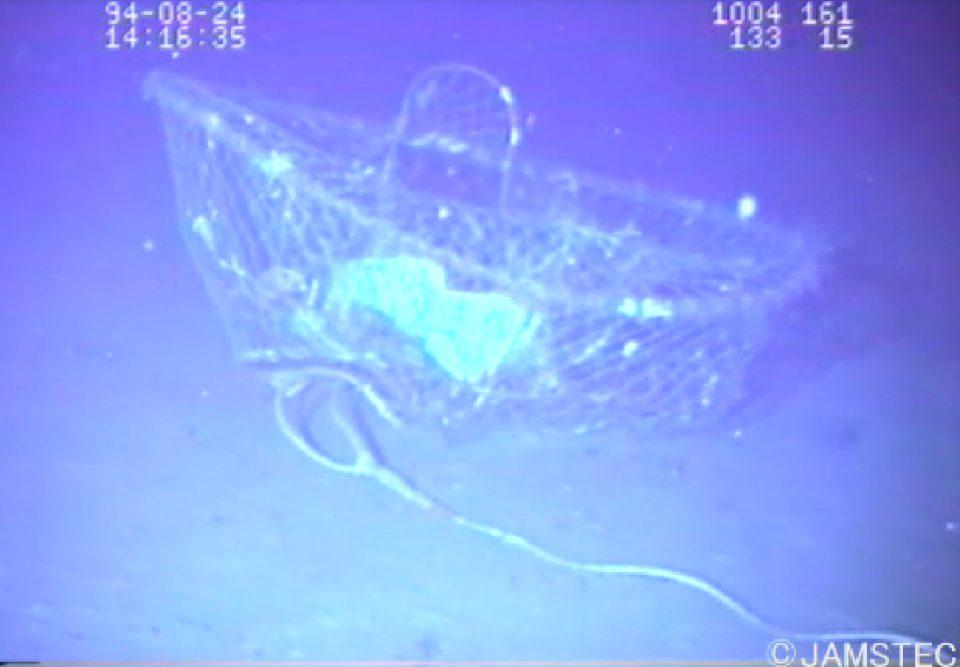The Bottom of The Ocean is Littered With Plastic

Scientists have confirmed that plastic bags litter the very depths of the Earth's oceans inside the Mariana Trench. The findings highlight a polluted region of the ocean often ignored: the very bottom.
Scientists from the Japan Agency for Marine-Earth Science and Technology (JAMSTEC) and the United Nations were able to determine that "plastics are ubiquitous even at depths >6000 m (over 3.7 miles down) and 92 percent was single-use products." Single-use plastic was even found at 10,898 meters (11 miles down) below the surface inside the Trench.
Their findings have been published in Marine Policy.
JAMSTEC launched its Deep-sea Debris Database in March 2017, meant to archive images and video of ocean debris that have been collected since 1983. These images have been collected deep-sea submersibles and remotely operated vehicles. The database has grown to capturing 5,010 individual dives.
From those 5,010 dives, scientists were able to count 3,425 man-made debris items. Over a third of these objects were macro-debris, defined as being over 20 mm (0.78 inches), and of the macro-debris 89 percent was able to be identified as single-use items like plastic bags.
The deeper the study got, the higher these numbers rose. Below 6,000 meters, 52 percent of the debris was macro-debris. And of that number, 92 percent was single-use.
Other debris included metal (26 percent), rubber (1.8 percent), fishing gear (1.7 percent), glass (1.4 percent), cloth/paper/lumber (1.3 percent), and and other anthropogenic items (35 percent).

There were 124 animals identified in pictures with plastic, ranging from sea anemone to ray-finned fish known as actinopterygians. These animals were at times interacting with the plastic items, resting on them, or being entangled by them. The research team plans on conducting a separate study focusing on animals at these levels.
Deep sea ecosystems aren't for the weak. Not many animals can survive the oceans depths but those that do are extremely important to the ecosystem. In the western Pacific, for example, near Japan, tectonic activity is common on the sea floor. Tectonic activity at that depth can lead to the sporadic formation of hydrothermal vents, which leads to the introduction of chemosynthetic bacteria. At the second-to-bottom rung on the food chain, chemosythetic bacteria play crucial roles in fostering the hydrothermal vents that spur diverse life throughout the oceans.
"With their slow growth rate and endemic distribution, recovery of deep-sea ecosystems will be difficult once they are severely damaged," says lead author Sanae Chiba in the team's paper.
Even with all those dives, humanity has still only seen 5 percent of the ocean. A new XPRIZE challenge is pushing scientists to develop new methods of deep-sea exploration. The better understanding of the damage being down there, the better chance there is of correcting the damage.
Source: National Geographic
You Might Also Like

